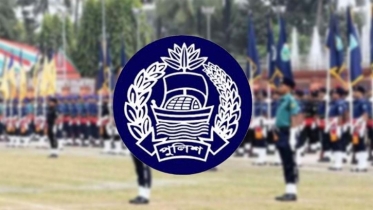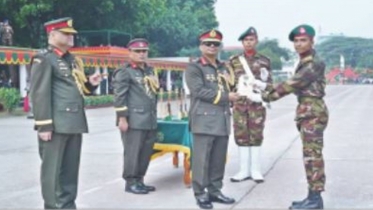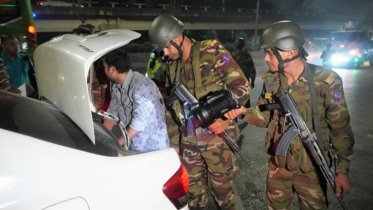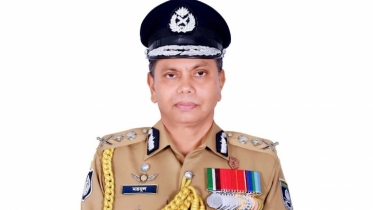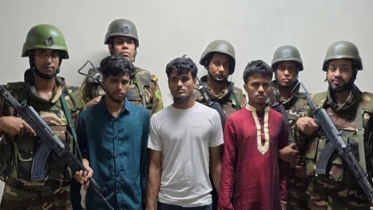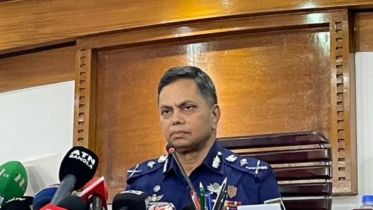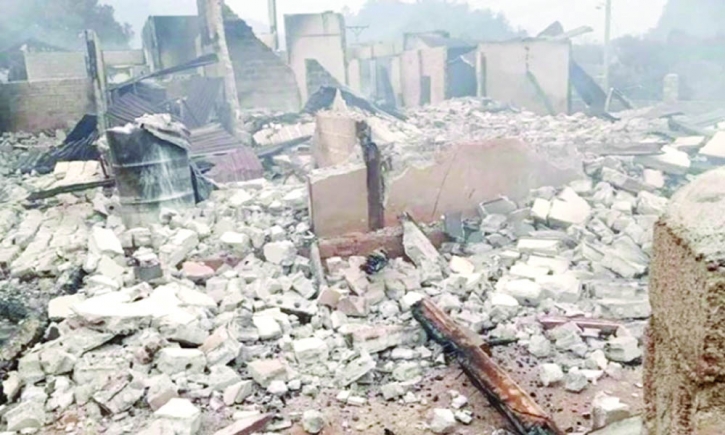
Myanmar’s military government has denied reports of a new mass killing of civilians by its troops, instead blaming pro-democracy resistance groups for the deaths of more than 20 people, including three Buddhist monks and a woman.
Members of armed resistance groups opposed to the military government have said the bodies of 22 people were found late Saturday in the compound of the Buddhist monastery in Nam Nein village, in the southern part of Shan State in eastern Myanmar. They blamed the army for the deaths.
No independent witnesses have emerged. The military government's tight restrictions on travel and information make it virtually impossible to verify details of such incidents.
The village is about 80 kilometers (50 miles) east of the capital, Naypyitaw. The area is part of the Self-Administered Zone of the Pa-O ethnic minority. It is governed by the Pa-O National Organization, or PNO, which is allied with the military government. Other Pa-O support the resistance. Reports of the killings came about a week after accusations that troops earlier this month rampaged through several villages in western Myanmar, carrying out rapes and beheadings and killing at least 17 people.
Critics of the military say there is strong evidence that the army has repeatedly carried out war crimes since seizing power from the elected government of Aung San Suu Kyi in February 2021. Opposition to military rule has turned into what some U.N. experts have described as a civil war.
Earlier this month, U.N. High Commissioner for Human Rights Volker Türk accused the ruling generals of implementing “a scorched earth policy in an attempt to stamp out opposition.”
Anti-government resistance groups and villagers who had fled Nam Nein earlier but kept in touch by phone with the monastery said about 30 people had been sheltering in its main building since fighting in the area escalated last month.
Exactly what happened Saturday morning is unclear, but the aftermath was documented in photos and video.
Those released on social media by the anti-government Karenni Nationalities Defense Force showed monks and other men with apparent bullet wounds lying near and against the wall of the monastery’s main building. They also show pools of blood and bullet holes dotting the wall.
The Pa-O area is next to Kayah State, where the Karenni, an ethnic minority fighting against the government, are dominant.
A local leader of the Karenni guerrillas who took the photos said that his group’s snipers in the surrounding area had used their rifle scopes to watch about 100 soldiers firing their guns and torching houses as they entered the village Saturday morning.
He said the snipers were unable to watch more, because they had to withdraw when coming under fire from government aircraft.
The Karenni guerrilla, who asked not to be identified because of fear of reprisals by the military, acknowledged that his forces had not witnessed the killings, but had only seen the bodies when they entered the village late Saturday and took photos. He strongly denied the resistance forces had been responsible for the killings, as had been alleged by the army and its supporters.
Maj. Gen. Zaw Min Tun, a spokesperson for Myanmar’s ruling military council, said the violence was initiated by the resistance forces who ambushed army troops and members of an associated militia force, and then entered the village where fighting continued.
He described the resistance forces, the Karenni National Progressive Party — an ethnic minority militia battling the army — and their allies in the Karenni Nationalities Defense Force and People’s Defense Force, as “terrorist groups” that had been posing threats to the area since early this month.
The Karenni have been fighting for decades for greater autonomy. The People’s Defense Forces were formed by the pro-democracy movement after the 2021 military takeover, and are allied with groups such as the Karenni.
“When (the) terrorist groups violently opened fire, it was seen that some villagers were killed and injured,” the military's spokesperson said in an interview published Tuesday in the state-run Global New Light of Myanmar newspaper.
Zaw Min Tun said that the army had only counterattacked against the three resistance groups, and reports that soldiers were responsible for killing villagers were misinformation.
A 45-year-old Nam Nain resident who left the village in late February because of fighting told The Associated Press that he had been in daily touch by phone with the monastery’s presiding monk, who refused his entreaties to leave.
“The monk called me at 8 a.m. on Saturday. He said ‘They are entering into the village. I can hear the sounds of gunshots and artillery,’ and he suddenly hung up the phone,” said the villager, who spoke on condition of anonymity because he feared being punished by the authorities,
“He couldn’t say which groups entered. So it is not clear who killed the people,” the villager said Monday. He added that the monk, who was his nephew, and two of his brothers-in-law, were among those killed.
A village elder who also left Nam Nein in late February told AP that all those killed in the monastery compound were civilians who had stayed to help look after the monks.
“More than 20 people who were killed in the monastery were just our villagers. They are not the PDF members, not soldiers and members of PNO,” said the villager, who spoke on condition of anonymity because he feared being punished by both the authorities and local pro-democracy forces.
He said he also was told over the phone by the presiding monk about troops entering the village on Saturday morning, but didn't know if they were from the army or the guerrillas.
Manny Maung, a researcher for Human Rights Watch, speculated that the village's relative proximity to the country's capital might have caused the military to act to deter guerrilla activity in the area.
“It’s impossible for independent verifiers or independent researchers to go in. But it has the classic hallmarks of military atrocities," she said. “I think that if we don’t get the opportunity to go in now, we’re likely never to know who the actual perpetrators were.”

